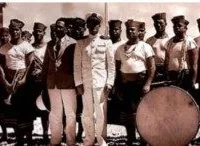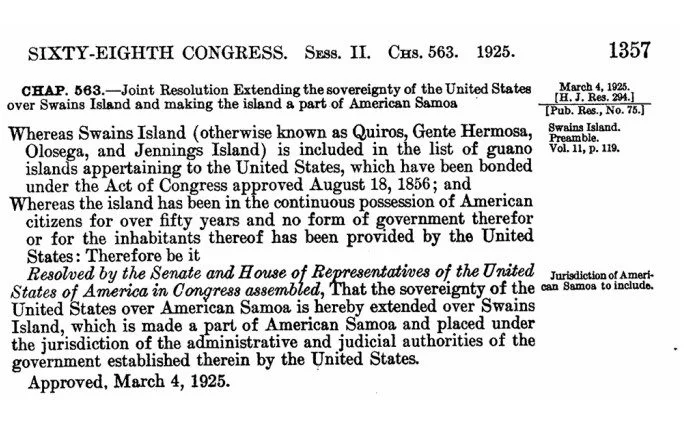
May 13 marks the 100th anniversary of Swains Island becoming a part of American Samoa.
The Swains Island community is making preparations for the centennial celebration, but ASG has not yet announced a program to mark this historic event.
A series of articles about Swains Island is being compiled by Swains Islanders as a lead-up to the celebration.
Swains Island’s status as a United States possession dates back nearly 170 years, beginning in August 1856 through the Guano Islands Act. The Jennings family—descendants of Eli Hutchinson Jennings of Southampton, Long Island, New York—has maintained continuous ownership of Swains Island from the 1850s to the present. Jennings and his wife, Malia Su’a Jennings of Lefaga, Samoa, industrialized a coconut plantation at the height of the copra trade in the Pacific.
The U.S. Congress recognized U.S. sovereignty over Swains Island on March 4, 1925, by making it a part of American Samoa. Lt. Commander C.D. Edgar raised the U.S. flag on May 13, 1925, officially declaring Swains Island part of American Samoa. Then, on February 20, 1929, Congress ratified the Deeds of Cession between the United States and Tutuila and Manu’atele, solidifying American Samoa’s status as a U.S. territory together with Swains Island.

These measures created opportunities for economic and social growth. The Swains copra provided jobs, tax revenues and allowed Tutuila and Manu’a to combine their copra harvest with that from Swains Island for export. Later, the Swains Island seas contribute approximately 100,000 square miles of ocean, which continues to feed the tuna cannery industry today. Descendants of Swains Island became prominent leaders in the church, traditional Samoan families, government, businesses, and have served as decorated U.S. military personnel.
Photo: Alexander Eli Jennings 1, Capt, Edward Manson, USN Governor of Amercan Samoa and the Fitafita Guard on Swains Island, May 13, 1939/Historical Preservation Office





